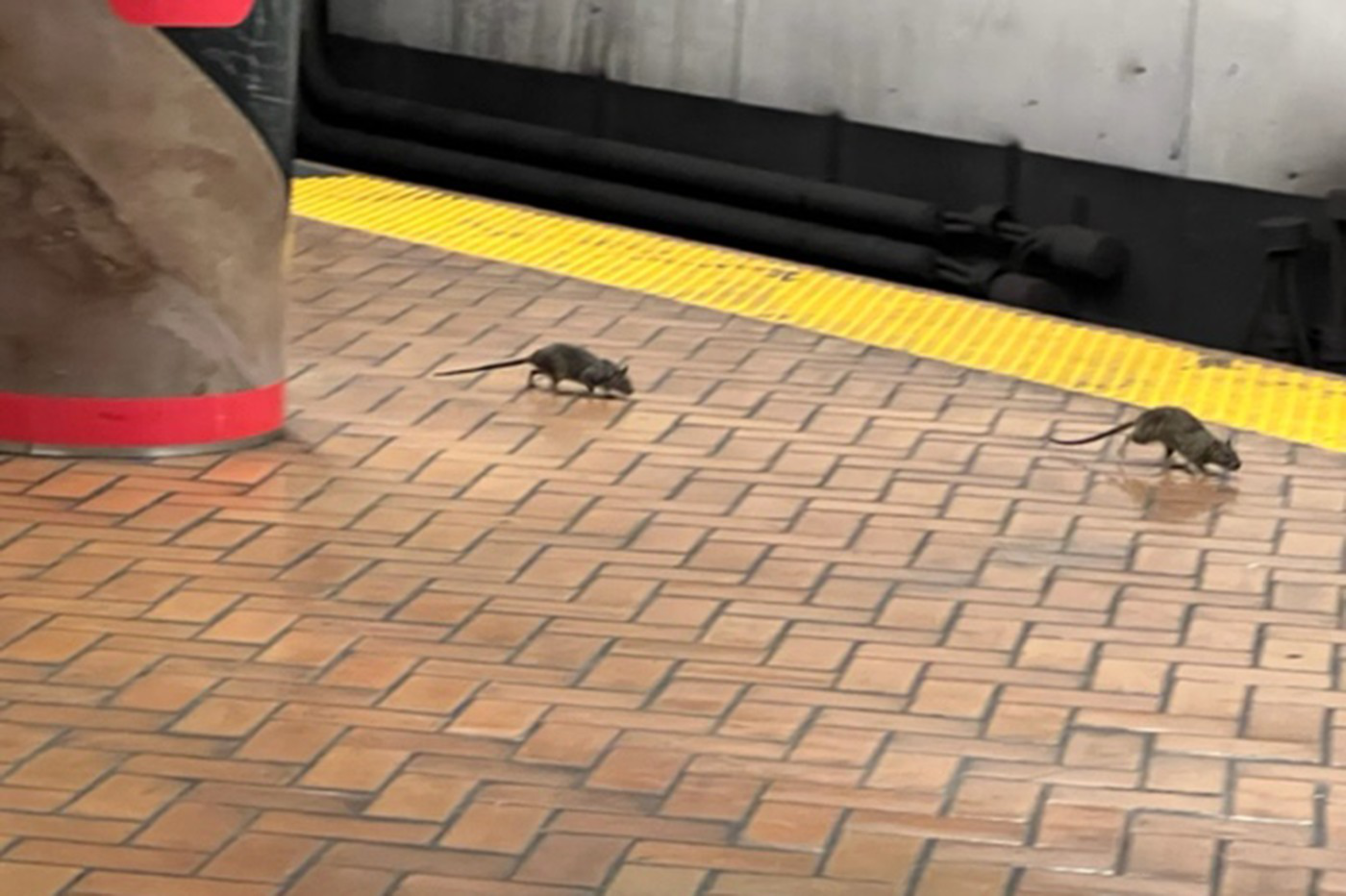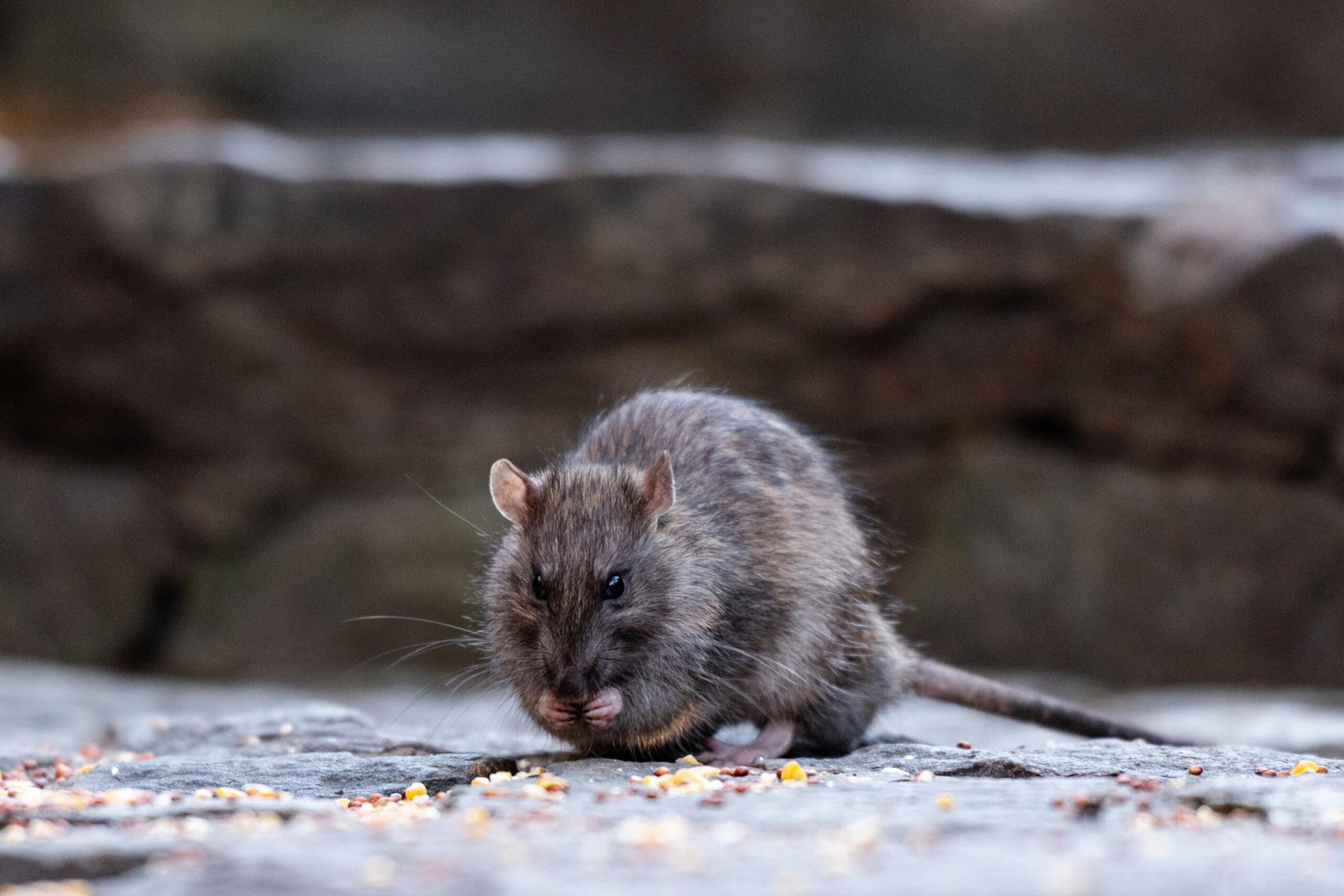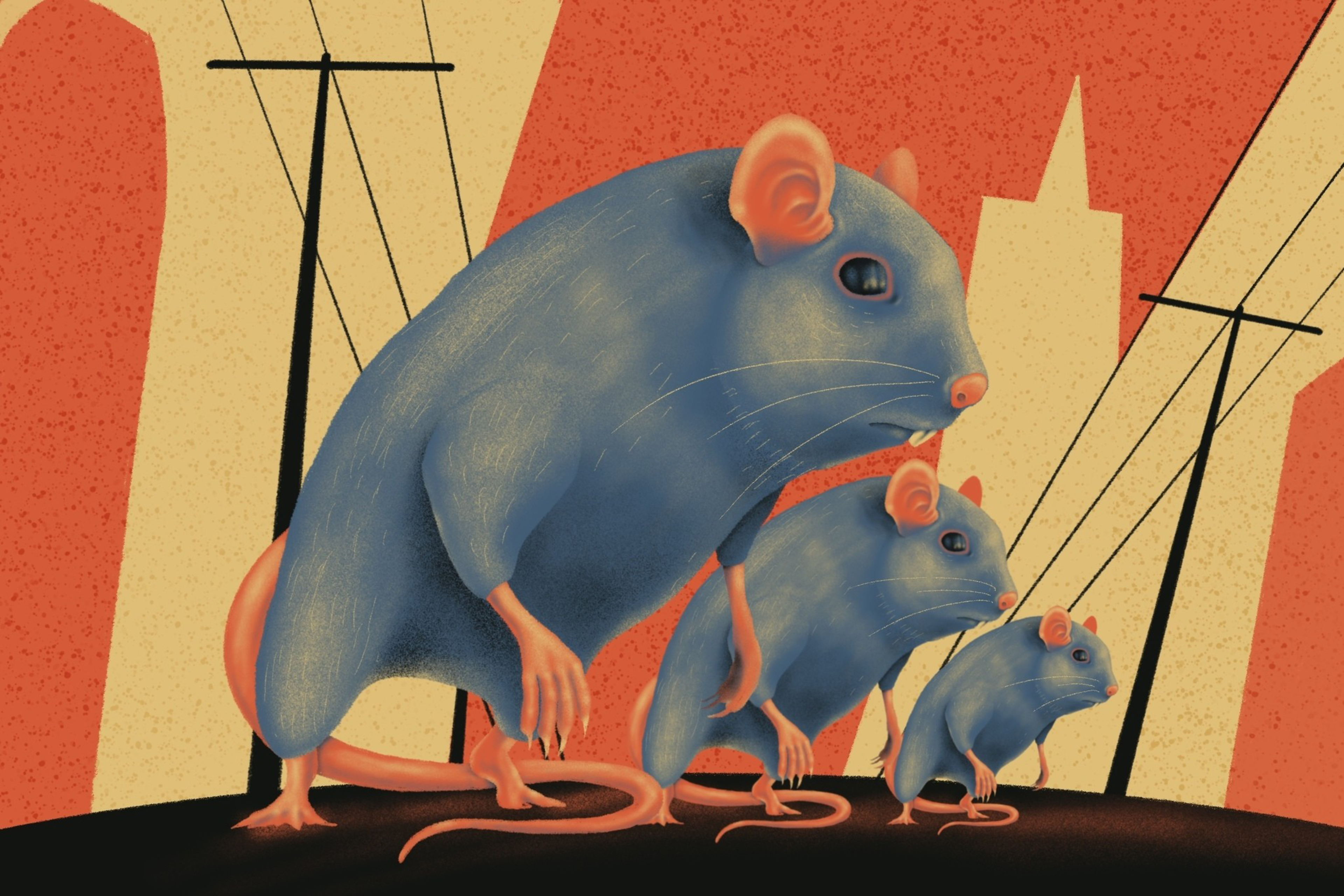Rikki Ercoli has lived off San Francisco’s Market Street for 19 years, but he never saw rats until this year. At night, he says, he glances through his bay windows and sees them scurrying. And they’re not small ones, either.
“They’re pretty fat,” Ercoli, a photographer, said. “The trash room is directly below me, and I see them running out in packs of two and three.”
After talking to his landlord and successfully dealing with a separate mouse problem on his own, he recently heard a “weird scratching noise” coming from the metal plate that covers up his old-style stove vent, a common element in older San Francisco apartment kitchens. “That was really, really freaky,” Ercoli said. “I thought it was some kind of reptile. I still don’t know what it was, but it made me think of the rats.”

Of all the urban woes that keep San Francisco residents up at night — an owner move-in eviction, losing homeowners insurance, the Big One — few match the mundane horror of a rat infestation. Their size startles us. They make a mess. They’re embarrassing.
And their numbers may be increasing — dramatically.
A study of 16 major cities (14 in North America, plus Amsterdam and Tokyo) over an average of 12 years, published last month in Science Advances (opens in new tab), found that climate change is fueling a hemisphere-wide population boom for Rattus rattus, the black rat. In the case of San Francisco, the population has grown by more than 10% — more than every other city in the study besides Washington, D.C.
The ‘rodentation’ of San Francisco
Jokes about a rodent infestation in the nation’s capital aside, there’s nothing funny about what’s going on in San Francisco. Rodolfo Dirzoa, a professor of environmental science at Stanford University who was not involved in the study, said the findings are consistent with what he sees happening in the Bay Area. He said another point in the study is hugely significant: the increasing loss of vegetation.
“The reduction of population regulation associated with the loss or decline of natural biodiversity,” Dirzo wrote via email, “creates an ideal synergy for rat proliferation.”
Fragmented ecosystems give rats opportunities to thrive, causing what Dirzo calls a “rodentation” of the city. Exterminator Maria Talacona, cofounder of the Bay Area’s Mighty Men Pest Control (opens in new tab), is all too familiar with it. “We’re definitely seeing an increase in rodent activity anywhere buildings are extremely close together,” Talacona said, adding that this living nightmare is “my favorite thing to talk about.”
An inability to walk around all four sides of a building creates spaces where humans can’t leave their scent behind. That signals that a place is safe to burrow and build nests. “It gives them a very strong advantage, because we can’t get to them.” The other pathway for an infestation is garage doors. If they don’t close tightly, rats can get inside.
Climate change, Talacona added, is likely messing with rats’ predators, such as raptors and garter snakes (opens in new tab). (The carnivorous California squirrels (opens in new tab) that made headlines late last year seem content to eat voles … for now.)
However, Talacona said, the other reason for the exploding rat population is the state’s new approach to poison. To protect the health of birds, mountain lions, and other animals that may consume poisoned rats, Gov. Gavin Newsom signed a bill in 2024 that prohibited the use of anticoagulant rodenticides, leading the Center for Biological Diversity (opens in new tab) to crow that “California OKs strongest rat poison restrictions in nation.” Talacona likened that approach to throwing the baby out with the bathwater.
The coyotes won’t save us
Rats love urban density. And San Francisco is California’s densest city. One thing that could work in our favor are the coyotes, which are also growing in numbers in San Francisco, and which can devour well over 1,000 small rodents (opens in new tab) per year (as well as the occasional household pet). But a single breeding pair of rats can spawn thousands of young in a year, outmatching any apex predator and decimating our backyard Meyer lemons.
“We’ve seen coyotes in parks and the Marina,” said Lorenzo Llamas, an entomologist and area district manager for Western Exterminator (opens in new tab). “But they don’t necessarily want to be in those highly dense areas. Combined with available food sources, you have conducive conditions” for rats to flourish.
Llamas is particularly vigilant about trash. Rats, which are nocturnal animals, can learn when it’s garbage pick-up time. “I make a point to get up earlier and take my trash out in the morning, versus letting it sit out all night,” he said. “That’s just another opportunity for a rodent to find that food and bring it back to their nest.”

Asked about the scale of the problem, San Francisco’s Department of Public Health had no comment, while Animal Care and Control said it is not in the business of extermination. “We get calls about rats. It’s usually someone surrendering a pet rat, or a rat that got stuck to a glue trap,” spokesperson Deb Campbell said.
Even then, 311 data might not be the best way to grasp the magnitude of San Francisco’s rat issue. “Rat populations are not being monitored effectively,” said Niamh Quinn, a human-wildlife interaction adviser at University of California Agriculture and Natural Resources.
We don’t necessarily need a thorough rodent census, she said. Cities just need to deploy existing vector-management programs that tell experts like her whether the total population is going up or down. Still, knowing they’re there doesn’t make established pests any easier to get rid of. “Rats are neophobic, meaning they’re afraid of new things,” Quinn said. “Our research shows they prolifically avoid the devices we use to manage them.”
In the meantime, rats aren’t the only thing proliferating: Myths about them may be, as well. One popular belief, that they can squeeze through tight spaces because they have flexible skulls or hinged ribcages, is false. Another misconception, Quinn says, stems from the human capacity for denial.
“There’s never just one rat,” she said. “We live in an infinite sea of rats.”
